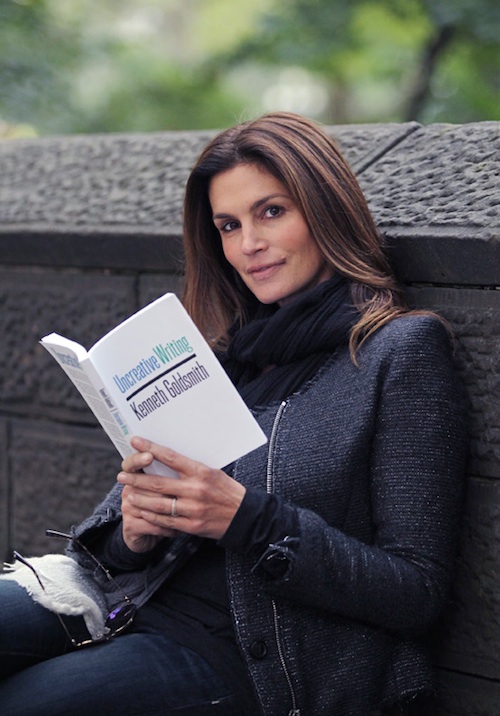Letters of Marshall McLuhan (1987)
Filed under book | Tags: · biography, communication technology, language, literary theory, mass media, media, media theory, print, technology, television

McLuhan corresponded with a vast number of people, including Duke Ellington, Woody Allen, Jacques Maritain, Rollo May, Susan Sontag, Eugene Ionesco, Wyndham Lewis, Ezra Pound, Bob Newhart, Hubert Humphrey and Jimmy Carter.
Heavily annotated, the letters are arranged in three sections, each with a period introduction: 1931-1936 takes McLuhan through the University of Manitoba and Cambridge University. 1936-1946 covers one year’s teaching at the University of Wisconsin; two years at Saint Louis University; one year, with his bride, at Cambridge for work on his Ph.D.; four more years at Saint Louis; and two years as Assumption College, Windsor, Ontario. These letters include a large correspondence with Wyndham Lewis. The last section begins in 1946, when McLuhan went to the University of Toronto. Two years later he began a long correspondence with Ezra Pound. Covering the period of McLuhan’s fame, it ends in September 1979 with a letter to Pierre Elliott Trudeau, written shortly before McLuhan had a stroke that rendered him speechless.
These letters have been selected from a large collection, now in the Public Archives of Canada, and offer a valuable commentary on McLuhan’s work and, in some instances, the most lucid and detailed explanation of his ideas available.
Selected and edited by Matie Molinam, Corrine McLuhan, and William Toye
Publisher Oxford University Press, 1987
ISBN 0195405943
562 pages
Review (R.D. Berg, Canadian Journal of Communication, 1988)
Review (Frank Kermode, London Review of Books, 1988)
PDF (189 MB, no OCR, any help in reducing the size is welcome!)
Comment (1)Kenneth Goldsmith: Uncreative Writing: Managing Language in the Digital Age (2011)
Filed under book | Tags: · appropriation, authorship, conceptual writing, concrete poetry, data, language, literary theory, literature, poetry, technology, text, uncreative writing

“Can techniques traditionally thought to be outside the scope of literature, including word processing, databasing, identity ciphering, and intensive programming, inspire the reinvention of writing? The Internet and the digital environment present writers with new challenges and opportunities to reconceive creativity, authorship, and their relationship to language. Confronted with an unprecedented amount of texts and language, writers have the opportunity to move beyond the creation of new texts and manage, parse, appropriate, and reconstruct those that already exist.
In addition to explaining his concept of uncreative writing, which is also the name of his popular course at the University of Pennsylvania, Goldsmith reads the work of writers who have taken up this challenge. Examining a wide range of texts and techniques, including the use of Google searches to create poetry, the appropriation of courtroom testimony, and the possibility of robo-poetics, Goldsmith joins this recent work to practices that date back to the early twentieth century. Writers and artists such as Walter Benjamin, Gertrude Stein, James Joyce, and Andy Warhol embodied an ethos in which the construction or conception of a text was just as important as the resultant text itself. By extending this tradition into the digital realm, uncreative writing offers new ways of thinking about identity and the making of meaning.”
Publisher Columbia University Press, 2011
ISBN 0231149913, 9780231149914
272 pages
Interviews with author: CUP blog (2011), Mark Allen (The Awl, 2013).
Reviews: Andrea Quaid (American Book Review, 2011), Sam Rowe (Full Stop, 2011), Stephen Burt (London Review of Books, 2012), Amelia Chesley (J Electronic Publishing, 2012), Michael Jauchen (HTMLGiant, c2012), Grant Matthew Jenkins (James Joyce Quarterly, 2012), Andrew McCallum (English in Education, 2013).
Commentary: Special section of American Book Review dedicated to uncreative writing (ed. Doug Nufer, 2011).
HTML (added on 2016-03-01)
EPUB (updated on 2015-10-9)
Brian Rotman: Becoming Beside Ourselves: The Alphabet, Ghosts, and Distributed Human Being (2008)
Filed under book | Tags: · affect, alphabet, body, computing, gesture, god, language, mathematics, networks, posthuman, representation, self, semiotics, speech, subjectivity, technology

Becoming Beside Ourselves continues the investigation that the renowned cultural theorist and mathematician Brian Rotman began in his previous books Signifying Nothing and Ad Infinitum…The Ghost in Turing’s Machine: exploring certain signs and the conceptual innovations and subjectivities that they facilitate or foreclose. In Becoming Beside Ourselves, Rotman turns his attention to alphabetic writing or the inscription of spoken language. Contending that all media configure what they mediate, he maintains that alphabetic writing has long served as the West’s dominant cognitive technology. Its logic and limitations have shaped thought and affect from its inception until the present. Now its grip on Western consciousness is giving way to virtual technologies and networked media, which are reconfiguring human subjectivity just as alphabetic texts have done for millennia.
Alphabetic texts do not convey the bodily gestures of human speech: the hesitations, silences, and changes of pitch that infuse spoken language with affect. Rotman suggests that by removing the body from communication, alphabetic texts enable belief in singular, disembodied, authoritative forms of being such as God and the psyche. He argues that while disembodied agencies are credible and real to “lettered selves,” they are increasingly incompatible with selves and subjectivities formed in relation to new virtual technologies and networked media. Digital motion-capture technologies are restoring gesture and even touch to a prominent role in communication. Parallel computing is challenging the linear thought patterns and ideas of singularity facilitated by alphabetic language. Barriers between self and other are breaking down as the networked self is traversed by other selves to become multiple and distributed, formed through many actions and perceptions at once. The digital self is going plural, becoming beside itself.
With a Foreword by Timothy Lenoir
Publisher Duke University Press, 2008
ISBN 0822342006, 9780822342007
176 pages
Commentary (Ben Pritchett, Mute)
Review (Stevan Harnad, Times Literary Supplement)

